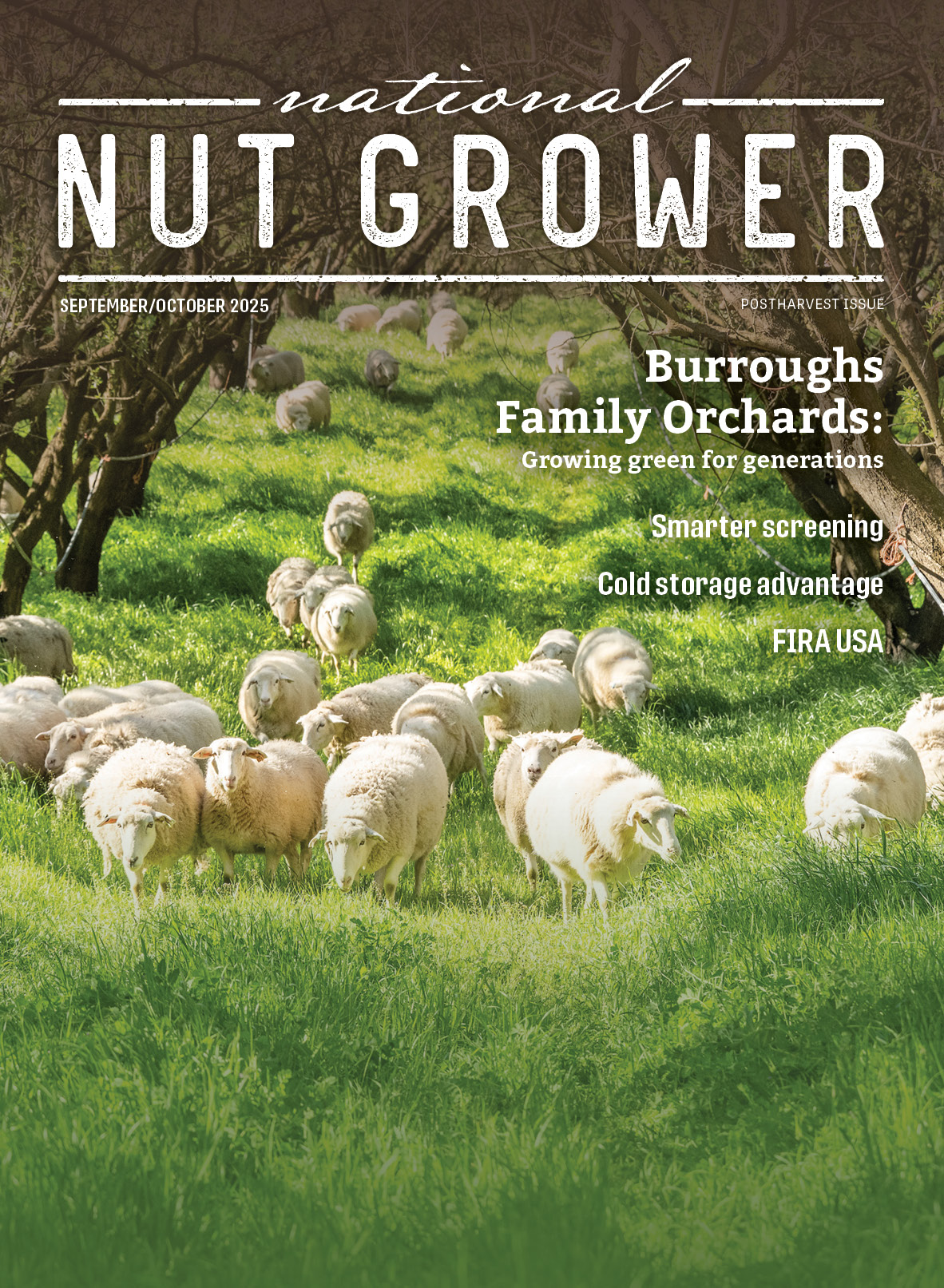July/August 2024
Late summer pecan challenges
The long pecan season continues throughout our wide U.S. pecan belt. Each region has its own issues, but the pecan tree and its needs remain the same. Avoidance of any sort of stress on the tree in the coming months is key not only to a successful finish of the current crop but also to next year’s crop.
As we approach late summer, we are entering perhaps the most critical point in any pecan season. There are a number of challenges growers must still navigate to finish the crop.
Crop stage considerations
First and foremost, we must consider the crop stage. Pecans will finish their nut-sizing by mid-August and will then begin to fill the kernels. As a result, water becomes increasingly important throughout this time. Water is the most valuable resource for maximizing the result of both processes.
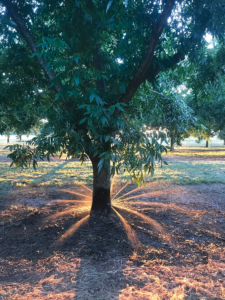
In Southeastern U.S. drip- and micro-sprinkler-irrigated orchards, irrigation system capacity should be at 45% of full capacity for July and early August, shifting to 100% of capacity in mid- August until the kernel-filling stage is completed in mid-September. No matter where the trees are grown, water is critical during this time and growers should check their state extension recommendations for proper amounts to maximize both size and quality.
Once kernel-filling is complete, irrigation rates can be cut by 50% to 60% in many areas, such as the humid southeastern U.S. However, do not underestimate the value and need for continuing irrigation through shuck split. Adequate soil moisture and water availability are required for normal shuck dehiscence and the avoidance of harvest-season problems like shuck decline, stick- tights, tuliping and vivipary that may take growers by surprise if measures are not taken to avoid them.
Crop load also plays a significant role in such late-season maladies. Overloaded trees are easily stressed by the crop load alone, which often drives the tree’s water demand. Crop load management is just as important as irrigation in preventing these issues. The best way to manage crop load is by hedge pruning either in the dormant season or in June.
However, if growers miss that window, mechanical fruit thinning can be employed to lighten the load a little. Late July and early August is a good time to do this, when the nuts have gained enough weight to shake off easily but have not yet moved into the induction period for next year’s flowers. This not only alleviates quality problems from over-cropping but also increases nut size, percent kernel and return bloom.
In addition to the immediate concerns related to the current crop, growers should also be giving consideration to next year’s crop at this time. Crop load obviously affects return bloom as mentioned above. Anyone who has employed mechanical fruit thinning has seen evidence of this fact.
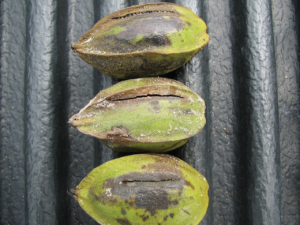
Pecan flowering
The pecan flowering process begins in two stages that can’t be seen with the naked eye. These stages are called flower induction and flower initiation.
Pistillate or female flower induction refers to the process within the plant by which various physiological cues stimulate the shoots to change from a vegetative to a reproductive state. This extremely important process takes place during August (around the time of shell hardening). Induction can be affected by pest pressure and environmental factors (sunlight, drought) and is markedly influenced by developing fruit.
Around the time of shell-hardening in mid-August, thin-shelled cultivars like Oconee, Sumner, Cape Fear, Wichita and Caddo can undergo a physiological problem called water-stage fruit split. The problem occurs when water pressure builds up rapidly inside the nut, causing the shell, seed coat and, in some cases, the shuck to split, resulting in abortion and drop of damaged fruit about seven days after splitting.
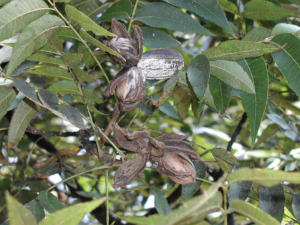
This malady is highly erratic, with incidence and severity varying depending on cultivar, location and year. Crop loss can be severe in certain years and nearly absent in others. Water split is associated with rainfall occurring at the initiation of shell hardening.
There are usually two episodes of water split. The major episode is usually triggered by rainfall (or potentially irrigation) and a relatively minor event triggered by “high humidity/low light.” Irrigation schedule, shading and crop load are also factors. Often, the split is inside the shuck and you will simply see green nuts on the ground, which will stain a few days later. Other times when the incident is particularly violent, you will see an actual longitudinal split in the shuck itself.
Insect pressure
Pest pressure also increases during these late summer months as aphids, mites and hickory shuckworm begin to move into the orchards. Growers should be vigilant about scouting for these pests and follow Extension recommendations for thresholds and spray decisions.
Aphids and mites are relatively easy to scout for, being obvious on the undersides of leaves. However, the hickory shuckworm can often go undetected until it is too late. Prior to shell-hardening, the feeding of shuckworm larvae within the nut results in premature nut drop.
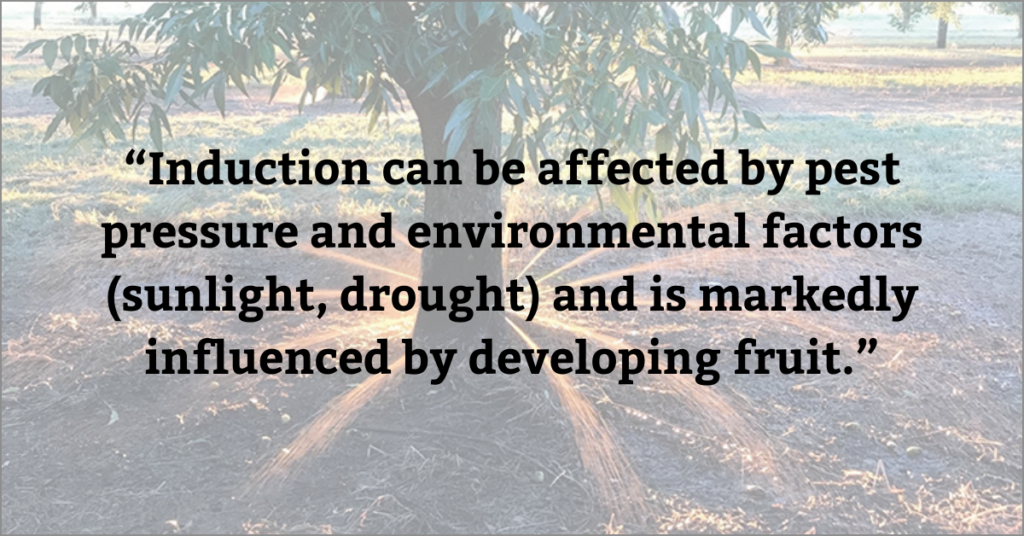
These nuts bear a white residue spot on the shuck where the eggs were attached. After shell hardening, larvae are confined to feeding within the shuck. Damage resulting from the shuck-mining activities of the larvae include poor kernel development (due to the severing of vascular tissue in the shuck), shuck sticking, scarring and discoloration of the shell and delayed nut maturity.
This later damage can be particularly troublesome because growers often will not discover they have a problem until harvest time arrives. Therefore, a shuckworm spray in mid-August is important, especially where shuckworm issues have been prevalent in the past. Avoid the use of broad spectrum insecticides like pyrethroids at this time because their use will flare aphid and mite populations, causing more problems and a greater overall cost of control.
As you can see, there is a lot going on in the orchards this time of year that could tilt the fortunes of growers in any direction. This is why it is so critical to keep the trees as stress-free as possible during July and August. This involves all aspects of production, including irrigation, crop load management and pest control.









